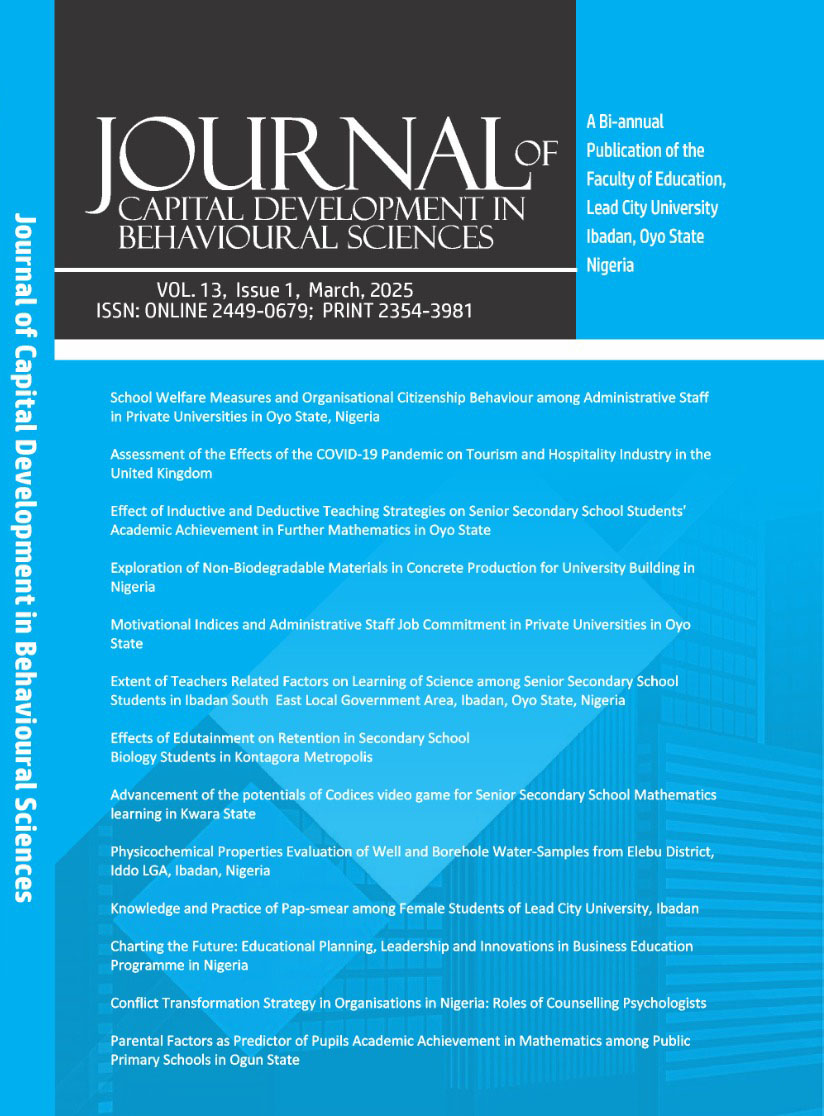Exploration of Non-Biodegradable Materials in Concrete Production for University Building in Nigeria
Keywords:
Waste, Mechanical, Slump, Glasscrete, Non-biodegradable materials.Abstract
Construction industry presents an attractive market for the use of non-
biodegradable materials, because one of the principal components of
construction is concrete, due to its high compressive strength. Incorporating
waste glass as coarse aggregate in structural concrete has the potential to
not only produce environmental benefits in the reduction of landfill, but to
also reduce costs for university building in Nigeria. This paper described the
influence of coarse glass on the fresh, hardened properties of concrete and
compare to the control (0%) and the Scanning Electron Microscope (SEM)
with Energy-Dispersive Spectroscopy (EDS). Coarse aggregate (gavel) was
partial replacement with coarse glass aggregates at 5%, 10%, 15% and
20%. Tests are conducted in compliance with British Standard (BS). Mix
ratio 1:2.5:3.5 (cement: fine aggregate: coarse aggregate) was used with
0.50 water/cement ratio to produce grade 25 concrete at 28 days. Results
showed that slump decreases with increase in coarse glass. 10% partial
replacement has good compression of 31.18 N/mm2after 28 days and SEM
analysis showed he portion of cracking and bonding effect which denoted the
existence of Calcium Silicate Hydrates (C-S-H gel) and Calcium Hydroxide
(CH). Therefore, glasscrete showed potential for becoming an additional
sustainable solution for waste recycling.

